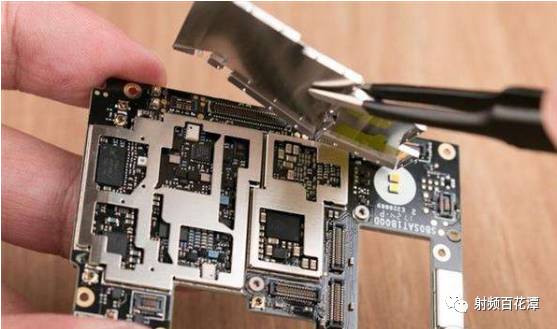As the mobile industry moves toward next-generation networks, the entire industry will face challenges in RF component matching, module architecture and circuit design.
Until the early LTE network deployment, the design of the RF system involved a relatively small number of front-end components, and therefore relatively simple and straightforward. As wireless networks begin to upgrade to LTE-Advanced, the design of RF front ends becomes more complex. At the same time, various technologies such as carrier aggregation, multiple-input multiple-output (MIMO), diversity receiver modules, and envelope tracking make 4G networks more efficient and stable.

The combination of many LTE bands around the world has already increased the complexity of RF design. In order to support a wide range of frequency bands and frequency bands, mobile devices require more RF components. Due to the limitations of the internal design of the smartphone, coupled with the limitations of the handset power supply and overall shape design, the RF front-end needs to be carefully designed to optimize the overall performance of the device and reduce signal interference. The design should avoid any negative impact on the industrial design, reliability and functionality of the handset, as well as support the innovative features and functionality of the handset.
As the industry moves toward LTE-Advanced Pro and 5G, the design of RF front ends will become more complex. New wireless networks require more RF front-end capabilities, including high-end MIMO and Massive MIMO, smart antenna systems, and sophisticated filtering. At present, the number of RF front-end components of a high-end smartphone supporting dual-carrier aggregation is seven times that of a standard 3G smartphone, and this number is expected to be upgraded with the upgrade of wireless networks into LTE-Advanced Pro and 5G. Times.
Just the right design considerationsAlthough the design of the RF front end is increasingly complex, the RF components of the smartphone reduce the use of physical space in three ways:
· Semiconductor technology with reduced area: The development of this process has led to a significant reduction in the size of some discrete components over the past few years. In the past, the advent of new materials such as gallium arsenide (GaAs) and silicon germanium (SiGe) has reduced the size of power amplifiers (PAs). At the same time, the size of current transceivers and low noise amplifiers (LNAs) is also reduced by the use of semiconductor technology with a reduced area of ​​28 nm and below.
Advanced packaging technology: Chip-Sized SAW Packaging (CSSP), Die-Sized SAW Packaging (DSSP), Thin-Film Acoustic Packaging (TFAP) New packaging technologies such as CuFlip and Wafer-Level Packaging (WLP) have dramatically reduced many RF front-end components, including filters, duplexers and multiplexers. In addition to component-level miniaturization, these technologies also save significant cost at the system level by reducing bill of materials and simplifying integration with other components, including antenna switches and transceivers.
· Increased physical integration of components: Integrated solutions from vendors such as Qorvo continue to accelerate the integration and modularization of key RF front-end components such as filters, PAs, duplexers and switches. These solutions reduce the size of the RF front-end by integrating certain components in the same package, which is critical to reducing overall size.
The concept of physical integration is being further extended with new packaging solutions. Among them, the front-end module integrated with the duplexer (FEMiD) and the PA module integrated with the duplexer (PAMiD) integrate various components such as PA, switch, transmitter low-pass filter and receiver SAW filter. Go to the front end module. Due to the heterogeneous nature of the various RF components and signal interference, not all components are suitable for integration, but these new integrated modules help reduce complexity and reduce space.
In addition, the discrete component design used in entry-level smartphones targeting a single market has a very clear line of design for RF front-end designs used in high-end smartphones worldwide. Obviously, the latter's higher level of component integration and fine design can provide better performance and performance. Most large OEMs are increasingly using a single RF front end for their flagship models to reduce operating costs and optimize the user experience. Currently widely used is PAMiD. At the same time, OEMs are reluctant to design a large number of smartphone models targeting a single market. Therefore, the adoption of FEMiD allows manufacturers to design mobile phones for different regional markets, and to support different frequency band combinations through easy replacement of modules.
The increasing complexity of RF front ends and the growing number of related components will significantly affect the industrial design of smartphones. Mobile phone manufacturers must ensure that their devices integrate these high-end technologies and their RF front-end requirements into their smartphones without affecting any of the following:
·Time to market
·price
·performance
·energy consumption
· Mature design elements (such as size, thinness, display size, use of metal casing, etc.)
For smartphone vendors, any major delay can be catastrophic. As the smartphone market matures and continues to compete fiercely, how to stay competitive is critical for OEMs. More importantly, OEMs have high hopes for next-generation wireless networks, hoping to boost demand for mobile upgrades and accelerate replacement cycles through network upgrades.

Undoubtedly, the upgrade of wireless networks will bring more challenges to all enterprises in the value chain. As RF front-ends become more complex, companies such as RF front-end architecture and component suppliers are actively seeking the best and cost-effective management and solutions. As a result, the emergence of suppliers of RF front-end standard modules and end-to-end solutions is as long-lasting as OEMs, greatly accelerating their RF front-end design flow and handset time-to-market. As with smartphone model analysis in ABI Research's Teardown service, RF system enhancements are tied to its silicon area. In other words, the area of ​​the RF board with the same RF design will increase significantly as the system supports new features and new components. However, the use of a precision-designed RF system allows the RF board area to be more compact and smaller. Obviously, the complexity of the RF front-end has caused most mobile phone manufacturers to suffer, and the industry still lacks standard implementation solutions. The main issues include how to balance the significant power consumption due to the increase in front-end components and the impact on the design of the phone. Faced with these challenges, some mobile phone manufacturers even choose to delay the launch of new models of mobile phones, in order to gain more time to ensure the normal operation of the mobile phone, to avoid the final decline into a virtual product.
Contrary to OEM manufacturers, RF component suppliers choose to produce customized products to meet their overall profits in order to meet the requirements of smartphone manufacturers and operators. Through a series of rationalizations in the RF supply chain, this business threat has begun to ease, such as the merger of TriQuint Semiconductor and RF Micro Devices into Qorvo. It is expected that in the next few years, more in-depth RF system integration and competition for market share will usher in more industry integration and cooperation.
The leading position in the RF market will depend on component and system level innovation and integrationClearly, hardware integration of RF components plays a key role in bringing next-generation networking technologies into smartphone reference designs. Unless there is more cooperation and targeted integration in the RF industry in the future, mobile phone manufacturers will face huge challenges in RF technology, especially with higher-level carrier aggregation, 4×4 MIMO and 5G communication technologies in smartphones. Widespread application, along with the challenges of industrial design and power management.
While the importance of comprehensive and high-performance RF components and modules is unrecognizable, they are still not used by most mobile devices. If the next generation of mobile devices is to have more new network technologies and functions, the entire industry needs more RF-related innovations. As the market moves toward LTE-Advanced Pro and 5G, the physical integration of components is not sufficient to meet the challenges of the RF front-end. The highly integrated RF front-end system design will be the key to this transformation.
There is no doubt that the design and platformization of RF front-end systems is critical to the ability of smartphones to carry more heterogeneous components. These heterogeneous components, such as MIMO systems, smart antenna systems and beam trackers, play an indispensable role in next-generation networks. As RF systems become more complex at the downlink and uplink layers, the integration of new system integration technologies, such as envelope trackers and dynamic antenna tuners, will be necessary to improve overall RF system performance, plus More spectrum bands, including C-band, mm-wave and cm-wave, will be turned on to support 5G, and the future business opportunities and challenges of RF solutions and designs are self-evident.
At the same time, suppliers must seize the opportunity to provide advanced RF front-end system design, not only the core RF front-end technology and advanced module integration, but also provide modem-to-antenna RF solutions. These high-end solutions will help meet the urgent needs of the smartphone industry, enabling OEMs to focus more on the customer experience and provide customers with more reliable equipment in a timely manner. These solutions also allow OEMs to spend less effort on the growing RF front-end components and their suppliers.
All vendors must be able to provide smartphone manufacturers with the tools to create next-generation devices. Therefore, it is expected that in the next 12 months, major suppliers and system integrators will continue to merge single-product vendors and some component suppliers. Intense market competition may also cause some RF component suppliers to exit the smartphone market.
Dongguan Deli Plastic Co.,Ltd is a manufacturer specialized in the research, development ,plastic injection mould and making mass production with well-equipped facilities and strong technical force.
Our products are extensively used in household industry/electronic industry/automobile industry/building industry and other industries.
We have rich experience on one-stop solution, provide various services from new product design,prototype,mold making,mass production,assembly and logistics. The most important advantage is we have our own R&D team to help clients to turn ideas into actual parts. All of these engineers and designers have over 15 years experience in these plastic products fields.
We have a strict quality control system, an excellent management team and also a dedicated sales force, enable us to fulfill our commitment in high quality products and outstanding services.
If you are looking for a trustworthy supplier of customized items, please do not hesitate to contact us. We are always striving to establish a win-win partnership with customers from all over the world and help our partners to stay one step in front of your competitors.
Rotating Fan,Small Rotating Fan,Rotating Fan Tower,Fan Rotation For Summer
Dongguan Yuhua Electronic Plastic Technology Co.,Ltd , https://www.yuhuaportablefan.com